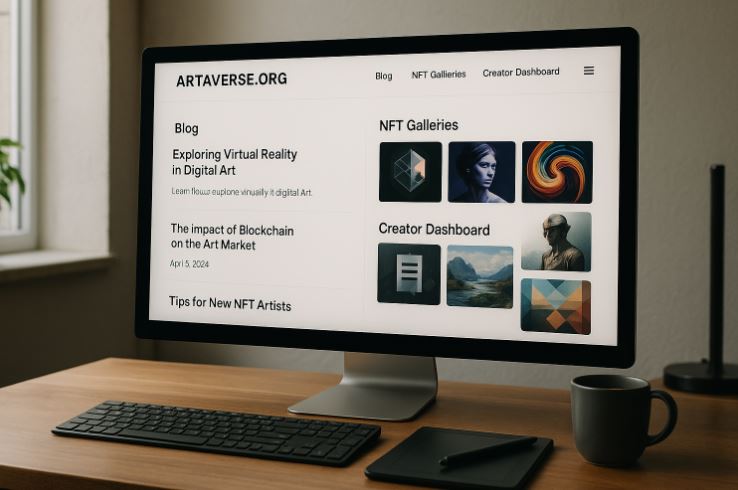Have you ever wondered how businesses make money from their intellectual property, brand names, or creative works? The answer lies in royalties.
Many industries, including entertainment, manufacturing, and franchising, rely on royalties to generate income. But what exactly is royalty, and how does it work in business?
This guide will help beginners understand what royalty means, how it functions in different industries, and its importance in business.
Whether you are a business owner, an investor, or just curious about financial models, this guide will provide you with a complete understanding of royalty in business.
What Is Royalty?

Royalty is a payment made to an individual or company for the use of their intellectual property, brand name, patent, or other assets.
These payments are usually agreed upon in a contract and can be based on a percentage of revenue or a fixed amount. Royalties are commonly seen in industries such as music, books, technology, and franchising.
The purpose of royalties is to allow creators and business owners to earn income from their work while allowing others to use their property legally.
These payments are structured to ensure that the owner continues to benefit from their intellectual property without selling it outright.
In the business world, royalty agreements are essential for protecting intellectual property rights. They help businesses earn passive income and encourage innovation by ensuring that creators and inventors receive fair compensation for their work.
What Is Royalty in Business?
In business, a royalty is a payment made to the owner of an asset for its use by another party. These payments are typically outlined in a licensing agreement and ensure that the asset’s owner continues to earn revenue from their property.
Companies often use royalty agreements to expand their business while maintaining ownership of their assets. For instance, a franchise business requires franchisees to pay royalties to the parent company for using its brand name and business model.
Similarly, a software company may license its technology to other businesses in exchange for royalty payments.
Royalty in business provides multiple benefits, including passive income generation and legal protection. It allows businesses to leverage their intellectual property without giving up control.
By structuring royalty agreements effectively, businesses can ensure a steady revenue stream while providing value to licensees.
How Do Royalties Work in Different Industries?
Royalty payments function differently across industries, depending on the nature of the asset being licensed.
- In the entertainment industry, musicians, authors, and filmmakers earn royalties when their work is sold, streamed, or broadcasted. Music royalties, for example, are paid to songwriters and artists whenever their songs are played on radio stations or streaming platforms.
- In publishing, authors receive royalties based on book sales. Publishers typically offer a percentage of the book’s selling price to the author, ensuring they earn money from each sale.
- The technology sector relies heavily on patent royalties. Companies that develop innovative technologies can license their patents to other businesses and receive royalty payments in return.
- In franchising, business owners pay royalties to the parent company in exchange for using the brand name, business model, and operational strategies. This is common in the fast-food and retail industries.
Understanding how royalties function in different industries helps businesses identify opportunities to monetize their intellectual property and expand their market reach.
Why Are Royalties Important in Business?

Royalties play a crucial role in business by providing a source of recurring revenue for asset owners. They offer financial benefits while allowing companies to maintain ownership of their intellectual property.
One of the main advantages of royalties is that they create passive income. Businesses and individuals can earn money from their creations without being directly involved in the sales or distribution process.
This model is especially beneficial for artists, authors, and inventors who want to focus on creating new works while generating revenue from their existing assets.
Royalties also encourage innovation by ensuring that creators are fairly compensated for their efforts. This financial incentive motivates businesses and individuals to develop new products, technologies, and creative works.
For companies that license their intellectual property, royalties help them expand their brand presence without incurring additional operational costs.
Instead of directly managing multiple business locations, a company can license its brand to franchisees and earn royalties while maintaining brand control.
What Are the Different Types of Royalties?
There are several types of royalties, each designed to suit different industries and business models.
- Patent Royalties: These are payments made to the owner of a patent for the use of their invention. Technology and pharmaceutical companies commonly use patent royalties to license their innovations.
- Copyright Royalties: Authors, musicians, and filmmakers receive these royalties whenever their work is used, distributed, or sold. This ensures that creative professionals continue to earn from their content.
- Trademark Royalties: Businesses pay these royalties to use a brand name, logo, or slogan owned by another company. Franchises often pay trademark royalties to the parent company.
- Franchise Royalties: Franchisees pay these fees to the franchisor in exchange for using the brand name, business model, and operational guidance.
- Mineral and Resource Royalties: Companies extracting natural resources such as oil, gas, and minerals pay these royalties to the landowner or government.
Each type of royalty serves a different purpose, but they all share the common goal of compensating the original asset owner.
How Is a Royalty Payment Calculated?

Royalty payments are structured based on predefined agreements between the asset owner and the licensee.
These payments ensure that the owner of intellectual property, a brand, or other assets continues to earn from their creations while allowing businesses to use them legally.
The calculation of royalties depends on various factors such as industry norms, market demand, and the value of the licensed asset.
There are two primary methods used for calculating royalty payments:
1. Percentage-Based Royalties
This is the most common method used in royalty agreements, where the licensee pays the asset owner a percentage of the revenue generated from the use of the asset.
The percentage varies based on industry standards, market conditions, and the specific agreement between the parties.
For example, in the book publishing industry, an author may receive a 10% royalty on the sale price of each book sold. If a book is priced at ₹500 and 10,000 copies are sold, the author’s royalty earnings would be:
Royalty Calculation:
Royalty Rate: 10% of ₹500 = ₹50 per book
Total Copies Sold: 10,000
Total Royalty Earnings: ₹50 × 10,000 = ₹5,00,000
This model benefits both parties since the asset owner earns more as sales increase, while the licensee can pay based on actual revenue instead of a fixed amount.
2. Fixed-Fee Royalties
In this method, the licensee pays a predetermined amount to the asset owner, regardless of revenue generated from the asset. This is commonly used in technology licensing agreements and franchising, where businesses need predictable costs.
For instance, a franchisee running a fast-food outlet under a well-known brand name may be required to pay a fixed monthly royalty fee of ₹1,00,000 to the franchisor, regardless of their monthly revenue.
This model ensures stable earnings for the asset owner but may be a financial burden on the licensee, especially if their sales fluctuate.
What Is the Difference Between a Royalty and a Licensing Fee?
While both royalties and licensing fees involve payments for the use of an asset, they are fundamentally different in structure and purpose.
Key Differences Between Royalties and Licensing Fees
| Feature | Royalties | Licensing Fee |
| Payment Type | Recurring (monthly, quarterly, or per sale) | One-time payment or fixed fee |
| Calculation Basis | Percentage of revenue, fixed periodic fee, or per unit sold | Lump-sum payment at the start of the agreement |
| Common Use Cases | Music, books, franchises, patents, software | Software licensing, brand name licensing |
| Financial Impact | Ensures continuous earnings for asset owners | Provides immediate revenue for the asset owner but no long-term earnings |
How Do Intellectual Property Rights Affect Royalties?

Intellectual property (IP) rights play a crucial role in royalty agreements. These rights grant creators and businesses legal protection over their inventions, creative works, trademarks, and brand names, allowing them to monetize their assets through royalties.
1. Ensuring Legal Ownership and Monetization
IP rights ensure that the original creators or owners of an asset have the exclusive authority to license or sell their property.
Without IP protection, businesses and individuals would struggle to claim ownership over their assets, leading to potential disputes and loss of revenue.
For example, an inventor who holds a patent for a new medical device can license it to pharmaceutical companies in exchange for royalty payments. This not only protects the inventor’s rights but also generates long-term income without selling the patent outright.
2. Types of Intellectual Property Rights That Generate Royalties
Several forms of IP rights allow businesses to earn royalties:
- Patents: Protects inventions, allowing businesses to license their technology in exchange for royalties.
- Copyrights: Grants rights to authors, musicians, and filmmakers, enabling them to earn royalties from their creative works.
- Trademarks: Protects brand names, logos, and slogans, ensuring that businesses can license their brand identity for royalties.
- Trade Secrets: Protects proprietary business knowledge, such as formulas and manufacturing techniques, which can be licensed for royalties.
3. Preventing Unauthorized Use and Piracy
One of the biggest challenges for asset owners is unauthorized use or piracy. Without proper IP protection, businesses risk losing revenue due to counterfeit products or unauthorized usage.
For instance, a software company with strong copyright protection can take legal action against unauthorized users who attempt to distribute or use their software without paying the required royalties.
4. International IP Rights and Royalties
Many businesses operate across multiple countries, making international IP protection essential. Countries follow different legal frameworks for royalties, and businesses need to ensure their assets are protected globally.
For example, a Bollywood movie production company may license its films to international streaming platforms. Without global copyright protection, the movie could be illegally distributed without any royalty payments to the creators.
5. Impact on Business Growth and Investment
Strong IP protection encourages business expansion and investment. Investors are more likely to support businesses with well-protected assets because they ensure consistent revenue through royalties.
Companies that effectively manage their IP rights can create long-term revenue streams without continuous investment in new products.
What Are the Legal Aspects of Royalties in India?
Royalties in India are governed by various laws and tax regulations to ensure fair compensation for intellectual property owners. Businesses and individuals receiving royalty payments must comply with the legal framework set by the Indian government.
1. Income Tax on Royalties
In India, royalty income is taxable under the Income Tax Act, 1961. It is considered part of the recipient’s total income and is taxed according to their applicable income tax slab.
For non-residents or foreign entities, royalty payments are subject to Withholding Tax (TDS) at a standard rate of 10% to 20%, depending on the nature of the royalty and any applicable Double Taxation Avoidance Agreements (DTAA) between India and the recipient’s country.
2. Goods and Services Tax (GST) on Royalties
Royalty payments are classified as a supply of service and attract GST at 18% in most cases. For example, if a company pays royalties for the use of software, GST is applicable on the payment.
3. Copyright and Trademark Laws
Royalties related to intellectual property such as books, music, software, and brand licensing fall under the Copyright Act, 1957, and the Trade Marks Act, 1999. These laws ensure that the owner retains rights over their work and receives fair compensation when licensed.
4. Patent and Technology Royalties
Patent royalties in India are regulated under the Patents Act, 1970. Businesses that license patented technologies must comply with patent laws to avoid infringement lawsuits or penalties.
5. Royalty Regulations in Franchising
Franchise businesses operating in India must follow guidelines set by the Ministry of Corporate Affairs (MCA) and must disclose royalty agreements in their financial reports to ensure transparency.
How Do Businesses Benefit from Royalty Agreements?

Royalty agreements offer businesses multiple advantages, allowing them to expand operations, generate passive income, and protect intellectual property. Here are some of the key benefits:
1. Passive Income Generation
Royalties provide businesses with continuous revenue without requiring direct involvement in operations. For example, an author receives royalties from book sales long after writing the book.
2. Business Expansion Without Heavy Investment
Companies can license their brand or technology to other businesses without investing in new infrastructure. For example, fast-food franchises like McDonald’s expand by licensing their brand to franchisees who pay royalties instead of the parent company opening new outlets.
3. Protection of Intellectual Property
Royalty agreements protect businesses from unauthorized use of their assets. For instance, software companies like Microsoft license their products to businesses while ensuring that they maintain control over their software rights.
4. Reduced Business Risks
Instead of taking the risk of entering new markets themselves, businesses can grant licenses to local companies in exchange for royalties. This minimizes financial risks while ensuring a steady income.
5. Encourages Innovation and Development
Companies that earn royalties from patents or trademarks are motivated to invest in research and development (R&D), leading to innovation. Pharmaceutical companies, for example, develop new drugs and earn royalties from licensing them to manufacturers.
What Are Some Common Examples of Royalty-Based Businesses?
Several industries rely on royalty payments as a major source of revenue. Here are some of the most common examples:
1. Publishing Industry
Authors earn royalties from book sales based on a percentage of the selling price. For example, J.K. Rowling receives royalties from every Harry Potter book sold worldwide.
2. Music and Entertainment Industry
Musicians and filmmakers earn royalties whenever their songs, movies, or shows are played, streamed, or broadcasted. Platforms like Spotify and YouTube pay royalties to artists based on streaming numbers.
3. Technology and Software Licensing
Tech companies license software, patents, and trademarks to other businesses in exchange for royalties. For example, Google licenses its Android operating system to smartphone manufacturers, earning royalties from every device sold.
4. Franchising Business Model
Many popular franchises, such as KFC, Domino’s, and Subway, require franchisees to pay royalties to the parent company for using the brand name and business model.
5. Pharmaceuticals and Biotech
Pharmaceutical companies license patented drugs to manufacturers who produce and sell them, generating royalty payments. For example, a company that develops a new vaccine may license it to different pharmaceutical firms in multiple countries.
What Are the Pros and Cons of Royalty Payments?

Royalty agreements provide businesses and intellectual property owners with financial benefits, but they also have some limitations. Here’s a breakdown of the pros and cons of royalty payments:
Pros of Royalty Payments
- Steady and Recurring Income: Businesses and individuals earn long-term passive income from their intellectual property without needing to manage operations.
- Business Expansion with Minimal Risk: Companies can expand through franchising or licensing without investing in new physical locations or direct operations.
- Legal Protection for Intellectual Property: Royalty agreements ensure that the rights of the owner are protected while allowing others to use the asset.
- Encourages Innovation and R&D: Companies that earn royalties from patents are motivated to invest in research, leading to new technological advancements.
- Scalability and Global Reach: Brands can expand globally by licensing their assets to businesses in other countries, increasing their market presence.
Cons of Royalty Payments
- Revenue Dependency on Licensee: The owner’s earnings depend on the success of the licensee’s business, which can be unpredictable.
- Legal Disputes and Compliance Issues: If a licensee fails to pay royalties or violates agreements, legal action may be required, leading to additional costs.
- High Initial Costs for Licensees: Businesses that pay royalties may find the cost burden high, especially if they are required to pay a fixed royalty regardless of sales.
- Fluctuating Market Conditions: Royalty income can be unstable due to changing industry trends, economic conditions, or new competitors.
Despite these challenges, royalty agreements remain a popular and profitable model for businesses looking to leverage their intellectual property while maintaining financial stability.
Conclusion
Royalties are a vital part of business, allowing companies and individuals to earn money from their intellectual property without losing ownership.
Whether through patents, copyrights, or franchising, royalties create financial opportunities while fostering innovation.
Understanding how royalties work in different industries can help businesses make informed decisions about licensing agreements and revenue models.
For beginners, learning about royalties provides valuable insights into the financial strategies that drive various industries.
FAQs
What industries rely on royalty payments?
Industries such as entertainment, technology, publishing, franchising, and natural resource extraction rely on royalty payments to compensate asset owners.
Are royalties taxable in India?
Yes, royalties are considered taxable income in India. The tax treatment depends on the nature of the royalty and applicable tax laws.
Can royalty payments be negotiated?
Yes, royalty rates and payment structures can be negotiated based on industry standards, market demand, and the value of the intellectual property.
How long do royalty payments last?
The duration of royalty payments depends on the licensing agreement. Some royalties last for a fixed period, while others continue as long as the asset generates revenue.
What happens if royalty payments are not made?
Failure to make royalty payments can result in contract termination, legal action, and financial penalties.
Do all franchises require royalty payments?
Most franchises require royalty payments, but the percentage and structure vary based on the franchisor’s business model.




